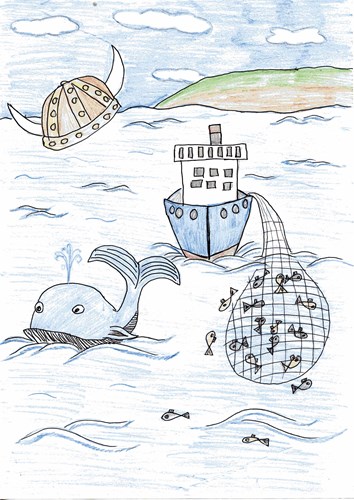Dilly’s Chocolates
Discover handcrafted chocolates in a variety of indulgent flavours, chocolate bars, seasonal specials, chocolate sticks and love spoons, all made in Pembrokeshire.
Read moreMilford Haven has seen Vikings, Tudor Kings, invaders and Admirals. Follow the path of history from 1793 to modern day. Learn about the admiration of the waterway throughout the ages and how our town came to be called Milford Haven.
Milford Haven has seen Vikings, Tudor Kings, invaders and Admirals. Nelson was said to have admired our waterway very much. Milford Haven’s deep waterway was formed around 10,000 BC by the flooding of a ria or ‘drowned valley’. It is an estuary forming a natural harbour that has been used as a port since the Middle Ages even though the town of Milford did not exist until 1793 when it was founded by Sir William Hamilton.
The waterway has a long history as a staging point on sea journeys to Ireland and was used as a shelter by Vikings. The name Milford developed from an old Scandinavian name Melrfjordr, ‘Melr’ meaning sandbank and ‘fjordr’ meaning fjiord or inlet and is a reminder of the Viking heritage. The Haven was added later.
Sir William Hamilton’s nephew, Charles Greville, invited seven Quaker whaling families from Nantucket and New England to settle in Milford and start a whaling fleet. Whaling in the waterway was short lived but was its ‘First Oil Age’. Milford went on to become an important fishing area. By 1906 it was the sixth largest fishing port in Britain and had over 500 people working in the industry which thrived through the first half of the 20th century but began to decline in the 1950s once fish stocks in the Atlantic started to vanish.
By the end of the 1860s there were forts built along the waterway that would be used for barracks for soldiers or for guns and cannons to protect the coast from attack. Wards Pier is located on the north shore of Milford Haven and was built in 1872 to encourage transatlantic traffic to unload as it allowed a rail and marine exchange because it is connected to the mainline railway.
During WW1, the Haven was used as an assembly point for convoys of merchant ships which sailed to Gibraltar and a base for armed Q-ships to counter the activity of German U-boats off the coast of Pembrokeshire. It was also so important to the Belgian trawlermen who in a time of danger as German forces moved through their country at the start of the war, sailed their trawlers loaded with their families and a few possessions, to seek refuge in our wonderful town and stayed for the duration of the war. You can see the Belgian memorial at the top of the Rath.
During WW2, Milford Haven was chosen as a base for allied American troops and Wards Pier had been turned into a Royal Naval Armament Depot.
These days, the Haven Waterway is still an important part of the area and the sight of ships sailing up and down it is a magnificent sight. Milford Docks now functions as a modern marina which is celebrating its 30th year this year.
Download the Heritage Walking Trails leaflet >
Darllenwch straeon yr Hafan Hanesyddol yn Gymraeg >


These stories have been researched and written by the pupils of Milford Haven School, who have used their creativity to tell the stories of Milford Haven’s history in their own words.
Three unique heritage walking trails which celebrate our town’s stories and sense of place have been created for everyone to enjoy by the young people of Milford Haven.
Discover handcrafted chocolates in a variety of indulgent flavours, chocolate bars, seasonal specials, chocolate sticks and love spoons, all made in Pembrokeshire.
Read morePart of The Celtic Collection, the 100 bed hotel opened in 2022 & also boasts a restaurant, bar, private dining area and activity suite.
Find out more